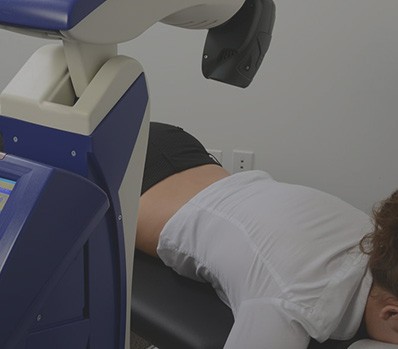Shoulder dislocation usually happens as a result of trauma caused by overexertion or injury. As the ball-like humeral head “pops out” of the shoulder socket, the sudden disengagement also has the effect of tearing, separating or stretching the surrounding ligaments, cartilage and muscles.
The intense pain you feel is a warning sign that the damage is significant. In most cases you will want to go to an emergency room, where medical professionals will attempt to put the humeral head back in place. If they are unable to do that, surgery will be necessary.
Evaluation
To diagnose shoulder dislocation, Dr. Nitz examines the shoulder to check for sensitivity and measures range of motion of the arms. X-rays will be important in ruling out other conditions, such as a shoulder fracture. Often an MRI or CT scan and/or dye test are used to check the integrity of bones, ligaments, muscles and cartilage, and survey the extent of damage.
Treatment
There are cases in which reinserting the humeral head into the socket, followed by a period of rest and recovery and often physical therapy, is enough to treat the condition, provided the patient does not plan to resume the vigorous physical activity that led to the occurrence. In such cases, a temporary sling or bracing may aid in recovery.
Depending on the damage done in a shoulder dislocation, it is very likely to happen again, increasing the likelihood of surgery at a future date. That is why surgery is often appropriate for even a first-time dislocation.
Dr. Nitz is skilled in Bankart Repair, a surgical procedure in which tissue is reattached to the socket rim. Sometimes the cartilage and/or ligaments have been so extensively damaged that a tendon transplant is advised, to build a new supportive structure for the joint. The repair can occasionally be done arthroscopically, as an outpatient procedure.
The arthroscopic option involves the use of a tiny instruments inserted through a small incision, allowing the surgeon to determine the condition of the joint and assess the extent of tears. In some cases, the damage can be repaired at the same time, but a serious dislocation may require open surgery. This surgical solution often involves the placement of metal “anchors” in the bone to hold sutures that allow ligaments to heal.
After Surgery
The way the ligaments, cartilage and muscles heal is important. If they heal while in a stretched or loose position, this increases the chances of future shoulder dislocation or instability. That is why following your doctor’s recommendations on rest and activity is essential.
When your healing is sufficiently advanced, you will begin physical therapy, which is key to a successful outcome. Rebab begins with initial immobilization and limited passive range of motion, progressing to assisted range of motion and then active range of motion with various strengthening patterns.
Soon after surgery, you should be able to begin limited use of your hand, wrist and elbow. Within three days to a week, you should be able to use the arm for simple tasks, such as feeding yourself. You should have most of your strength back within four to six months, but your shoulder will continue to heal for up to a year.
The good news is that when a surgical solution is used to repair damage caused by shoulder dislocation, the chance of it happening again is 3 to 5 percent, much lower than if the initial event had been treated with rest and physical therapy alone. If you would like to know more about shoulder dislocation, schedule a personal consultation with skilled Dayton, Ohio orthaepedic surgeon Dr. Paul A. Nitz by calling or emailing his office today.

